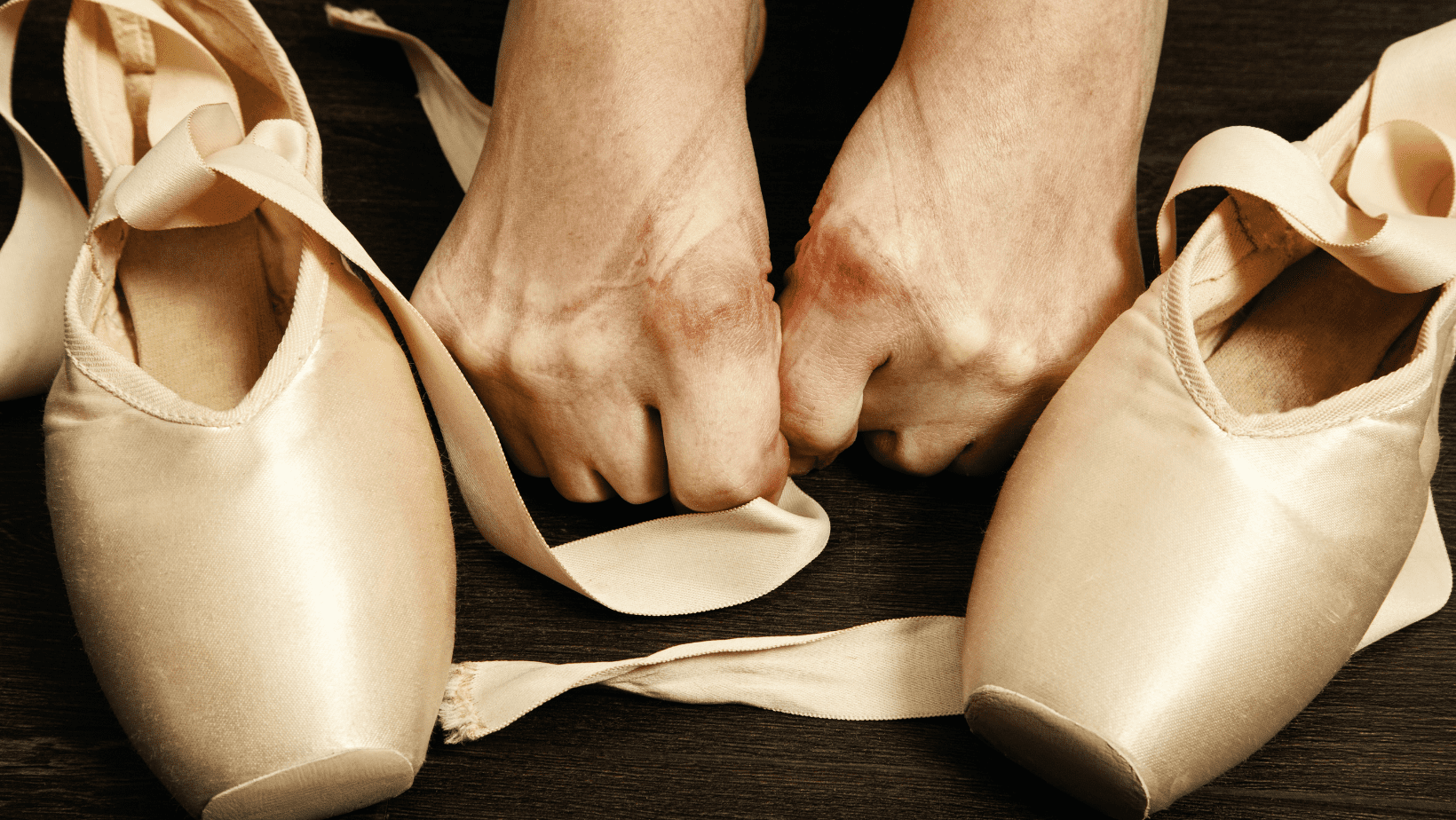Read More >
- Anterior Ankle Impingement - July 24, 2022
- Tarsal Coalition - October 12, 2022
- Sural Nerve Pain - October 3, 2022
Ballerinas put enormous amounts of force and stress through their feet, resulting in several overuse and trauma injuries. Some of these injuries can be resolved quickly and easily with the correct management while others can result in long-term changes to a Balerina’s Feet. This article will explore the common conditions that Ballerina’s Feet experience and explain how to manage these.
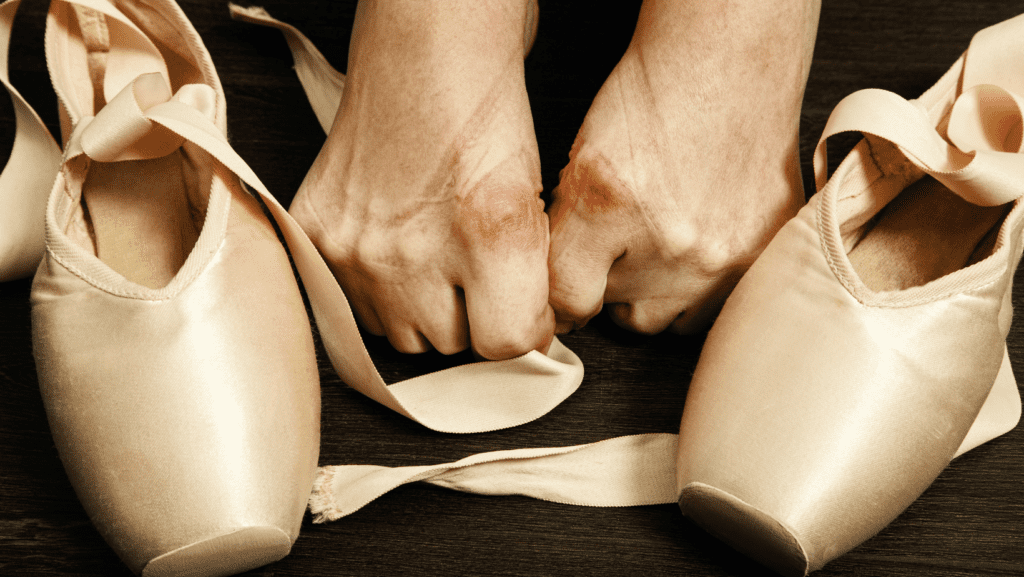
Dancing En Pointe
Dancing en pointe is a more common technique among girls than boys in ballet, and as a result, each is more susceptible to different types of injuries.
Female ballet dancers are more likely to develop conditions such as bunions, osteophytes, posterior ankle impingement, Morton’s Neuroma, Stress Fractures or Metatarsal Joint Pain.
Male ballet dancers have a higher risk factor for tendon injuries such as Achilles Tendonitis, Posterior Tibial Tendonitis and shin splints.
Many ballet dancers are hypermobile, increasing their risk for medial and lateral ankle sprains. Alongside this, it is a repetitive activity, increasing the risk of blister and corn development.
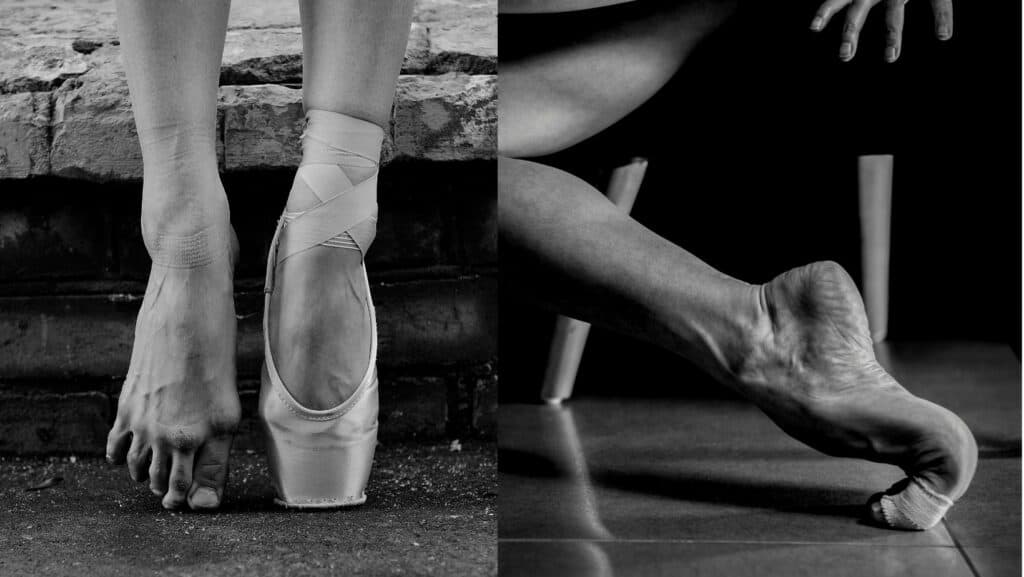
Female Ballerina Feet Injuries
It is important to remember that any of the injuries in this article can occur in any gender, but we have subcategorised them for ease of reading.
Big Toe joint pain can be caused by overload to the joint through repetitive pointe movements or from jumping. The extra stress of your body weight is placed on the big toe joint can lead to inflammation of the joint or the formation. Over time this can lead to a change in the position of the big toe joint, known as a Bunion or Hallux Valgus. While a bunion can be a genetic issue, it can also develop over time due to repetitive strain on the big toe joint.
Bony Osteophyte formation is the body’s response to a repetitive joint overload resulting in small bony growths on a joint that can pinch tendons in the area leading to pain in certain positions, or they can cause pain by rubbing off other joint surfaces.
Posterior Ankle Impingement causes pain at the back of the ankle bone around the area of the Achilles Tendon. It differs from Achilles Tendonitis in that it is unusual to have morning stiffness, and pain is worse on your tip toes for Posterior Anke Impingement and relieved when moving the foot into dorsiflexion. Treatment for Posterior ankle impingement is through strengthening and mobility exercises.
Morton’s Neuroma is a condition affecting the forefoot where nerves within the webspace of your forefoot can become inflamed and painful, the most common of these being between the 3/4th metatarsals. Patients describe a burning feeling or the sensation of a pebble within their shoe. Morton’s Neuroma can sometimes be quickly resolved with a metatarsal pad or custom insoles, while some may require a steroid injection.
Stress Fractures are common in the second and fifth metatarsals for ballet dancers, especially if your second toe is longer than your first toe. The second toe joint is not designed to tolerate full body weight when en pointe, and it can be easily overloaded when combined with impact activities such as jumping. We expect a pattern of pain that is present immediately with impact activities, and there may be some swelling and bruising in the area. An x-ray is required to confirm the diagnosis, and 4-6 weeks in a walking boot is normally recommended before returning to activity.
Flexor Hallucis Longus Tendonitis is pain and inflammation of the tendon of the big toe joint that assists in flexion of the toe. It is required of all Pointe movements and is regularly overloaded in ballet dancers. The pain location is typically under the big toe and along the midfoot, while there may be some pain in the inner ankle joint. It is common for sesamoiditis to be present alongside this condition.
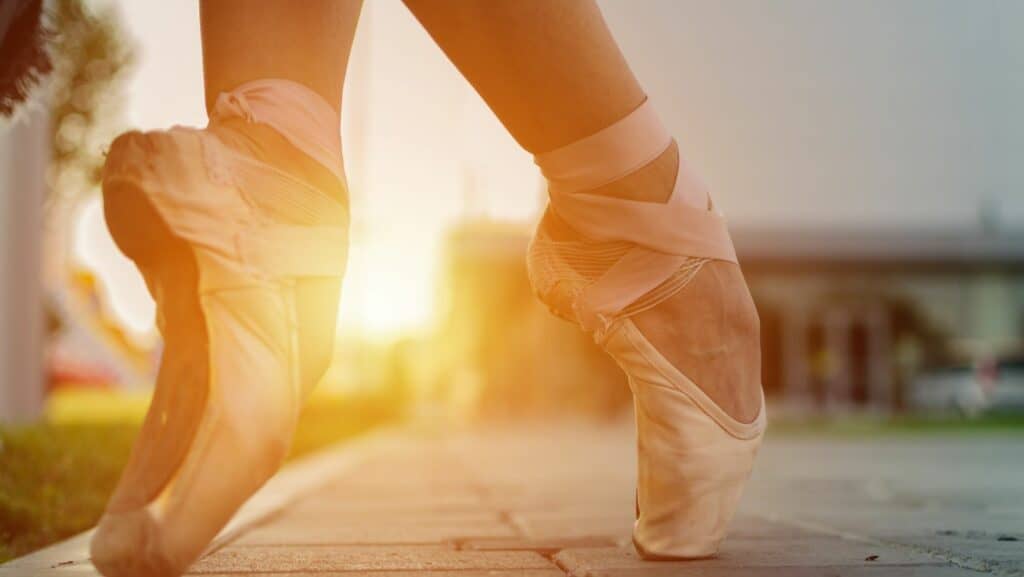
Male Ballerina Feet Injuries
Achilles Tendonitis results in pain on the back of the ankle joint along the Achilles Tendon. The pain can be in the midportion of the Achilles or on the insertion to the heel bone. It is essential to get the correct diagnosis as both are treated with strengthening exercises, which differ for each condition. A heel raise is a simple but effective method of pain relief.
Posterior Tibial Tendonitis can cause pain on the inner ankle and along the foot’s medial arch from repetitive jumping activities. The Posterior Tibialis provides stability to the arch of the foot and helps to turn the foot inwards. We expect this condition to follow a typical tendon pattern of worsening first thing in the morning, improving during physical activity, but worsening afterwards. Strengthening exercises work best for this condition alongside taping and insoles.
Shin splints (medial tibial stress syndrome) can occur on the front or inner aspect of the heel bone and result from repetitive impact. Irritation of the shin bone (tibia) leads to inflammation of the outer aspect of the tibia (periosteum) which can lead to sharp pain on impact. Shin splints are an overload issue and are treated with a reduction in impact activity, rehabilitation exercises and a graded return to physical activity.
Sprained ankles occur regularly for ballet dancers, ranging from mild sprains that recover within a few days to the inability to walk. Establishing the severity of an ankle sprain as quickly as possible is of utmost importance as it will determine treatment routes and the necessity for a walking boot or an x-ray.
Physiotherapy with James McCormack
This article is written by James McCormack, a Foot and Ankle Specialist who is an expert in treating Foot Pain.
This is not medical advice. We recommend a consultation with a medical professional such as James McCormack if you are experiencing any of the symptoms discussed in this article. James offers Online Physiotherapy Appointments weekly and face-to-face appointments in his London clinic.
